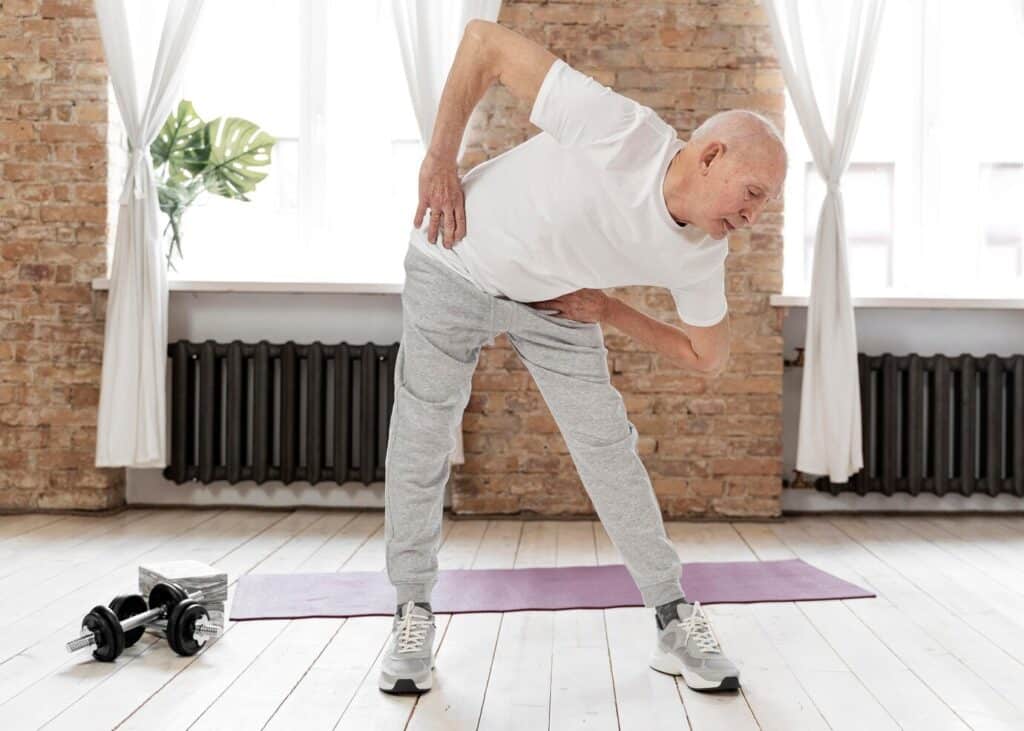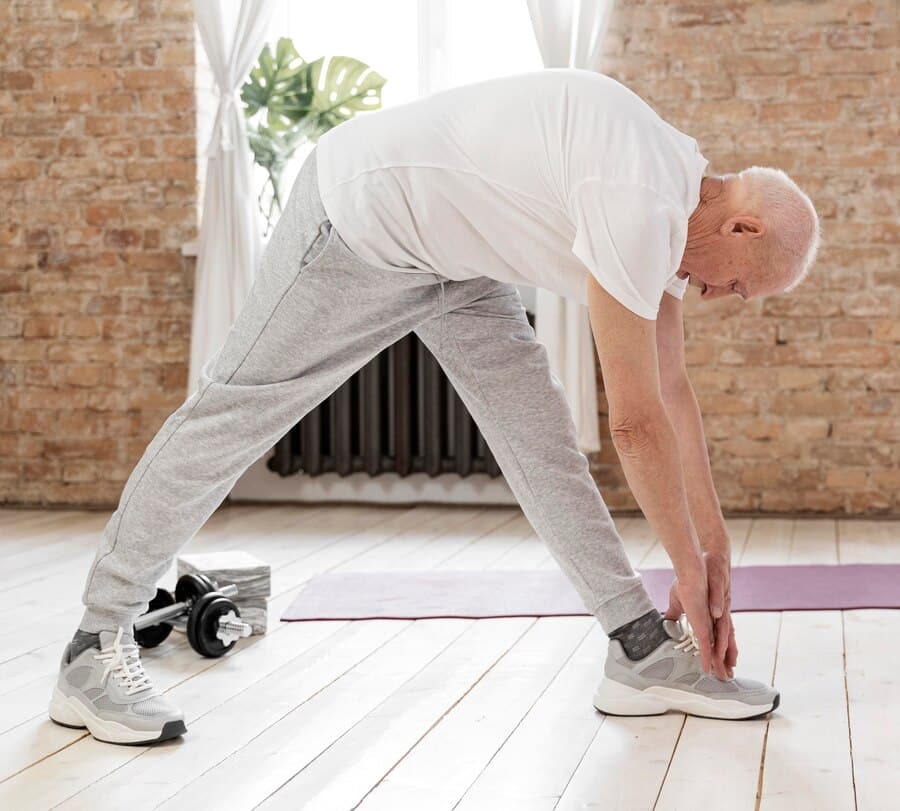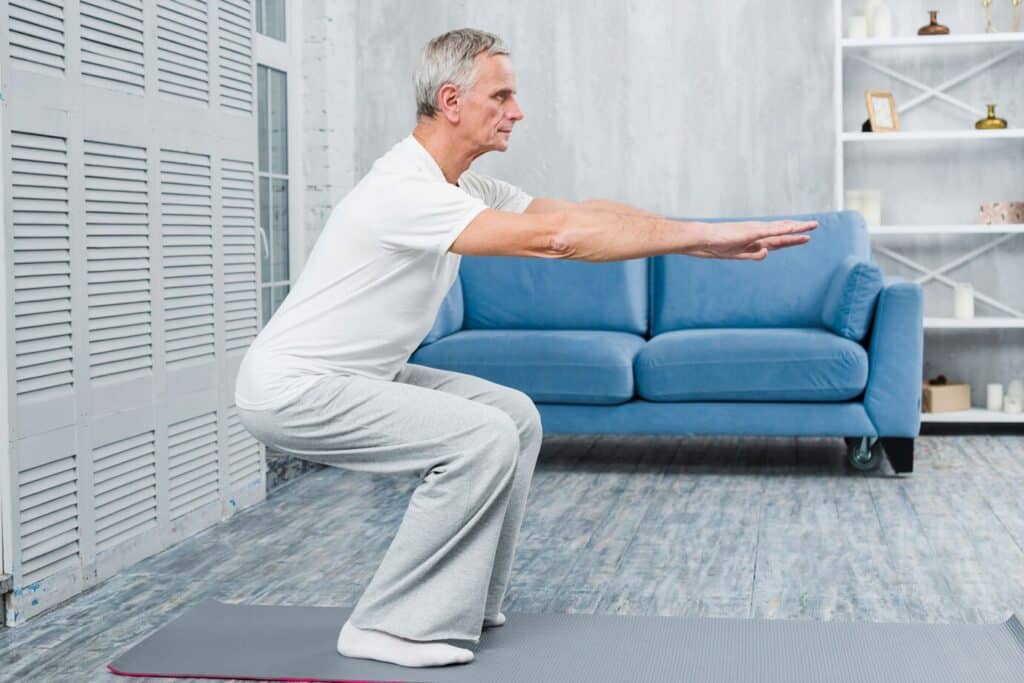Maintaining hamstring flexibility is vital for seniors seeking to stay active and independent. As we age, muscles can tighten, and mobility may decrease, but the proper stretching routine can help prevent discomfort, reduce fall risk, and promote better posture. At Westmont of Culver City, we emphasize wellness through simple, practical exercises that fit seamlessly into your day and keep your body moving with ease.
Why Hamstring Stretches for Seniors Matter
Flexibility in the hamstrings affects how easily you walk, sit, and move throughout the day. Tightness in these muscles often contributes to back pain and limited range of motion. Practicing hamstring stretches for seniors helps counteract stiffness, improve balance, and support healthy circulation. Even brief sessions can make everyday tasks feel more effortless. Stretching regularly offers emotional benefits, assisting seniors to feel more confident and engaged.
Incorporating these routines isn’t just about movement—it’s also about maintaining independence. By staying consistent, you may even reduce joint discomfort and enhance your ability to enjoy daily activities like gardening, walking, or spending time with loved ones. Consider pairing your routine with mobility exercises that promote fluid, natural movement throughout your legs and lower back for added mobility support.
Seated Hamstring Stretches for Seniors at Home
Hamstring stretches are safe and effective for seniors who prefer to remain seated. Sit at the edge of a chair with one leg extended and one foot flexed. Gently hinge at the hips, reaching toward your toes while maintaining a straight spine. You’ll feel a stretch along the back of the extended leg. Switch sides and repeat.
These hamstring stretches sitting down are perfect for seniors with limited mobility or balance challenges. They’re also a great introduction to flexible work from the start. Daily stretching improves muscle length, posture, and blood flow to your lower limbs. As part of your routine, seated hamstring work makes getting in and out of chairs or cars easier—giving you more control over your movement and comfort throughout the day.
Hamstring Stretches Sitting Down: A Simple Start
If you’re just beginning a stretching routine, hamstring stretches sitting down are a gentle, approachable way to start. These beginner-friendly stretches support flexibility without requiring a full range of motion or advanced balance. Practicing while seated ensures added stability, reducing the risk of overextension or strain.
As your mobility improves, you can gradually move into standing or lying stretches, building confidence. Even minor flexibility improvements can significantly change how your body feels. Consider adding a cushion or support behind your lower back for added comfort. Combining seated stretching with balance training further boosts coordination, allowing you to move more freely, whether walking, reaching, or climbing stairs.

Hamstring Stretches in Bed for Morning Mobility
Some seniors find that hamstring stretches in bed are the most comfortable way to begin or end the day. While lying on your back, extend one leg while gently raising the other toward your chest. Use your hands or a towel to support the raised leg and hold the stretch for 15–30 seconds. Switch sides and repeat.
This stretch is excellent for those with back or joint sensitivity, requiring no pressure on the spine or hips. Practicing hamstring stretches in bed is an ideal way to reduce morning stiffness and set the tone for better movement throughout the day. It also doubles as a calming, mindful routine before bedtime, promoting relaxation. Integrating this gentle stretch into your morning or evening rituals creates habits that support long-term health and flexibility.
Try Hamstring Exercises Over 50 for Lasting Results
If you’re over 50, flexibility training becomes even more essential. Practicing hamstring exercises at home helps maintain muscle elasticity, reduce cramping, and protect against muscle strains. These exercises improve hamstring function and support your knees, hips, and lower back.
Simple modifications—like using a towel or leaning against a wall—allow you to get a deep stretch without discomfort. The key is to listen to your body and breathe deeply with each movement. Consistency makes the most significant difference when doing standing, seated, or lying stretches. Stretching just 10 minutes daily can improve circulation, joint health, and freedom of movement. Regular stretching techniques contribute to a lifestyle where you’re less restricted by pain and more empowered to stay active.
Watch and Learn: Hamstring Stretches for Seniors YouTube
Watching hamstring stretches for seniors YouTube videos can benefit visual learners. These guided routines demonstrate proper form and offer valuable modifications, making stretching more accessible. Following along with an instructor can give you the confidence to try new stretches and hold them longer.
YouTube videos are available for all experience levels, including those new to stretching or managing chronic pain. Many instructors include routines with hamstring exercises for beginners, helping you feel supported at every stage. These videos often incorporate slow pacing and visual cues that make it easy to mirror movements. Consider bookmarking a few favorites so you can practice regularly. This approach transforms stretching from a chore into a mindful ritual that enhances your quality of life.
Create a Lasting Routine for Hamstring Health
Creating a routine with hamstring stretches for seniors isn’t about reaching perfection—it’s about forming habits that support your daily health. From hamstring stretch sitting down to in-bed or seated options, routines are suited for every comfort level. The goal is to stay consistent, be gentle with your body, and prioritize flexibility as part of your overall well-being.
The good news? You don’t need expensive equipment or lots of time. A sturdy chair, a towel, or even your mattress can become tools to keep your hamstrings healthy and strong. Stretching a few minutes daily helps reduce stiffness, maintain posture, and build strength. Whether you prefer hamstring stretch for seniors seated, lying down, or using video instruction, you choose a path of mobility, comfort, and confidence.
For more wellness tips and senior-friendly routines, call Westmont of Culver City at 310-736-4118. Your journey toward better movement and greater independence starts with a straightforward stretch.
What Level of Care Do You Need?
Discover the level of care you or your family member requires.
Frequently Asked Questions
How do you stretch an elderly hamstring?
To safely stretch an elderly hamstring, try seated or gentle standing stretches. One practical option is sitting on a chair, extending one leg forward with the heel on the ground, and slowly leaning forward at the hips until a stretch is felt along the back of the thigh. Hold the stretch for 20–30 seconds without bouncing, and repeat on both legs. Always move slowly and consult a healthcare provider if there are concerns about balance or mobility.
What is the fastest way to loosen tight hamstrings?
Consistent gentle stretching and light physical activity are the fastest ways to loosen tight hamstrings. Dynamic warm-ups, such as leg swings or walking, followed by static hamstring stretches, can help improve flexibility. Using heat therapy before stretching can also relax the muscles. For long-term improvement, daily stretching and hamstring exercises for beginners are recommended.
What causes hamstring pain in the elderly?
Hamstring pain in the elderly can be caused by muscle strain, lack of flexibility, or age-related changes in muscle and tendon elasticity. Poor posture, inactivity, or overuse during physical activity may also contribute. In some cases, underlying conditions like arthritis or nerve compression may be involved. It’s essential to consult a healthcare provider to determine the exact cause.
Is walking good for tight hamstrings?
Yes, walking is generally good for tight hamstrings as it promotes circulation and keeps the muscles active. It can help gradually increase flexibility and reduce stiffness over time. However, pairing walking with gentle stretching is important to fully address tightness. Seniors should ensure they use proper posture and supportive footwear during walks.







